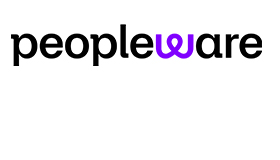Brad Cleveland, on behalf of injixo, shares ten great strategies for reducing overstaffing and understaffing in the contact centre.
It’s hard to create efficient schedules that meet the fluctuating demands in a contact centre. However, there are a number of creative scheduling approaches that can help you out. Pick the ones that fit best in your contact centre.
Considering that staffing needs fluctuate significantly throughout the day, month, and year, what can you do to ensure you have an adequate number of people in place without being overstaffed much of the time?
After all, few would want to work half-hour shifts.
Fortunately, quite a few alternatives exist and we’ll summarize many of them here. Not all will be feasible for you. This aspect of planning is creative—it involves putting all options on the table, identifying the scheduling approaches that could work in your environment, and then making a decision on those that you will use.
1. Hiring to your advantage – Important criteria when hiring new agents should be the hours and days they, in general, can be available to work.
2. Utilize conventional shifts – Most organizations have a core group of agents who work a traditional five-day week with shifts during normal hours (e.g., 9 a.m. to 5 p.m.).
That’s just fine, assuming there are additional scheduling options to address variability in workload within and beyond these hours.
3. Adjust breaks, lunch, coaching, and training schedules – Even slight changes to when these activities are scheduled can mean that more people are handling contacts at just the right times.
That can make a big difference. Some managers find that scheduling breaks and lunches on the 5-minute mark (e.g., 10:05, 10:10) helps—they won’t happen that precisely in reality, but this can lessen the impact of simultaneous events.
Within reason, this alternative is available to any organization.
4. Stagger shifts – For example, one shift begins at 7 a.m., the next at 7:30 a.m., the next at 8 a.m., etc., until the centre is fully staffed for the busy mid-morning traffic.
This is a common and effective approach. Be sure to tweak these shifts as necessary to account for changes in workload patterns.
5. Offer concentrated shifts – Given the choice, some employees will opt to work fewer days with more hours per day, while others would rather work fewer hours in a day, even if that means a six- or seven-day workweek. But keep in mind that not all agents can perform at high levels throughout extended shifts.
6. Use an envelope strategy – With more types of work to handle in today’s environment, many contact centres are using an “envelope” strategy (see figure)—meaning there’s a larger envelope of staff scheduled than generally required by customer contacts alone.
This approach recognizes that some types of work have to be handled at specific times of the day, and other types of work allow more flexibility. The idea is to move in and out of the various types of work as circumstances dictate. Collateral work provides flexibility, if it is planned and managed well.
7. Offer overtime – No additional training is required, and many agents will volunteer for the extra work. However, overtime can be expensive as an ongoing strategy and, once again, there is the question of whether or not agents can sustain high performance over longer shifts.
8. Give agents the option to go home without pay – Many organizations provide LWOP (leave without pay, pronounced “el-wop”) or VTO (voluntary time off) when workloads slow down.
(This is also common outside of contact centres, such as in warehouse facilities). There are agents willing to take you up on it, but you’ll learn with some experience how practical this approach is.
9. Schedule part-timers – Some centres are prevented from using part-time help by union agreements or by practicalities, such as complex services requiring extensive training.
But when available and feasible, this is a popular and common approach. I’m seeing more organizations use Uber-like scheduling and surge pay to cover high demand around holidays and off-hour shifts.
10. Establish reinforcements – When contact-handling duties are combined with other tasks, such as correspondence or data entry, the agents assigned to these collateral duties can act as reinforcements when the workload gets heavy.
Often called the “reinforcement method,” this approach is a bit like being able to bring in part-timers on an as-needed basis.
Just keep an eye on the workload that is being put aside, so that you aren’t creating downstream problems.
This blog post has been re-published by kind permission of Peopleware – View the Original Article
For more information about Peopleware - visit the Peopleware Website
Call Centre Helper is not responsible for the content of these guest blog posts. The opinions expressed in this article are those of the author, and do not necessarily reflect those of Call Centre Helper.
Author: Peopleware
Published On: 2nd Jun 2020 - Last modified: 21st Nov 2023
Read more about - Guest Blogs, Brad Cleveland, Peopleware






 Peopleware is a leading workforce management (WFM) solution, trusted by over 500,000 users in 30+ countries. With smart forecasting, automated scheduling and real-time management, organizations can optimize workforce efficiency and keep work aligned with demand. From precise time tracking to flexible planning, Peopleware helps organizations boost operational efficiency and foster a more engaged, productive workforce.
Peopleware is a leading workforce management (WFM) solution, trusted by over 500,000 users in 30+ countries. With smart forecasting, automated scheduling and real-time management, organizations can optimize workforce efficiency and keep work aligned with demand. From precise time tracking to flexible planning, Peopleware helps organizations boost operational efficiency and foster a more engaged, productive workforce. 









